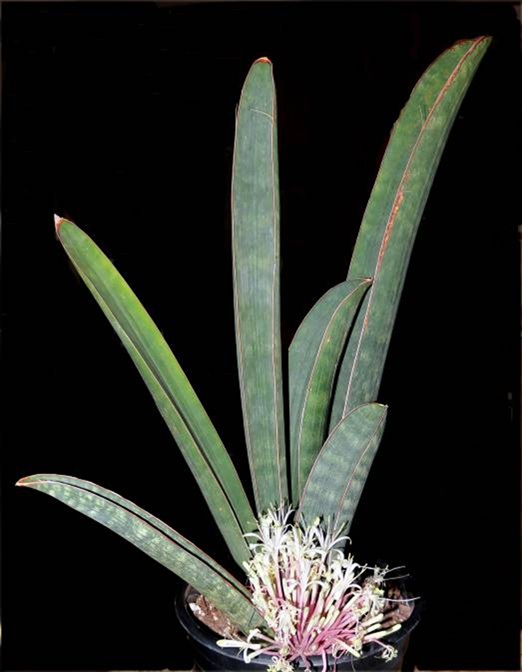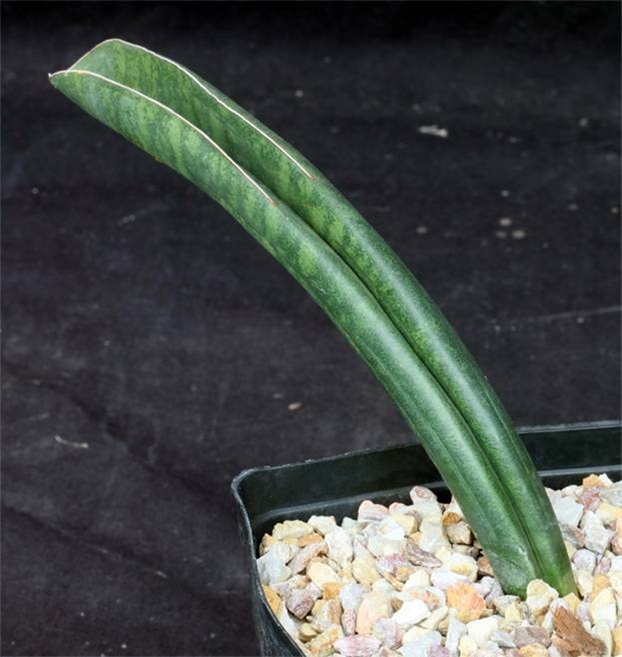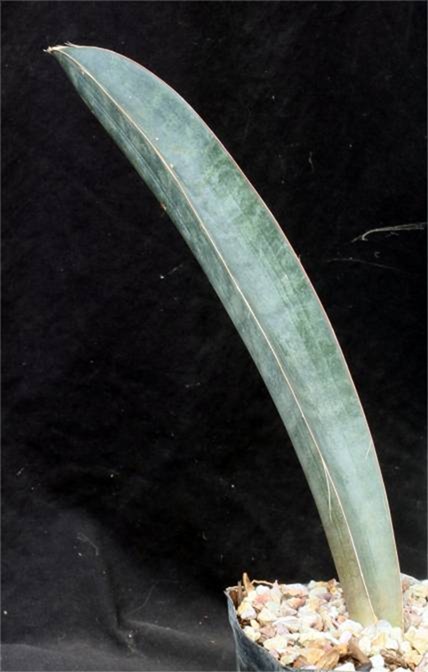| Protologue: |
Sansevieria Journal 5: 7 (1996). |
| Subgenus: |
Capitulatus |
| Group: |
Sansevieria hallii |
| Etymology: |
Named for Harry Hall, a British horticulturist who curated the succulent plant collection at Kirstenbosch National Botanical Garden near Cape Town, South Africa. |
| Distribution: |
This species primarily occurs in Zimbabwe but also is known from western Mozambique and northeastern South Africa. |
| Brief Description: |
One of the plants known as "baseball bats" or simply "bats", S. hallii is an acaulescent species with relatively short, stout leaves with rounded tips and a channel that runs the entire length of the upper surface. The leaves can be up to 60 cm long but are generally shorter, and they are 5 cm wide. The typical color of these leaves is a dull olive-green with obscure whitish mottling, and the surface can by slightly rough to very rough. The inflorescence is capitate and up to 18 cm high. |
| Similar Species: |
This species as currently construed is highly variable in the size of leaves and their color, resulting in cultivar names that include "Pink Bat," "Blue Bat," and "Giant Green Bat" (the latter probably a transitional form of S. sinus-simiorum). Sansevieria hallii could be considered the typical species of a group of plants with similar characteristics but different colors and sizes. These include Sansevieria humiflora, S. sinus-simiorum, and S. formosa. It also has a similar form to S. lunatifolia and S. enchiridiofolia from East Africa, but S. hallii differs in shorter, more blunt leaves and its capitate inflorescence. |
| |
| |

Sansevieria hallii flowering in cultivation.
|
| |

Sansevieria hallii 'Giant Bat' in cultivation.
|
| |

Sansevieria hallii 'Pink Bat', a cultivar collected by the late Dave Richards (R2470).
|

